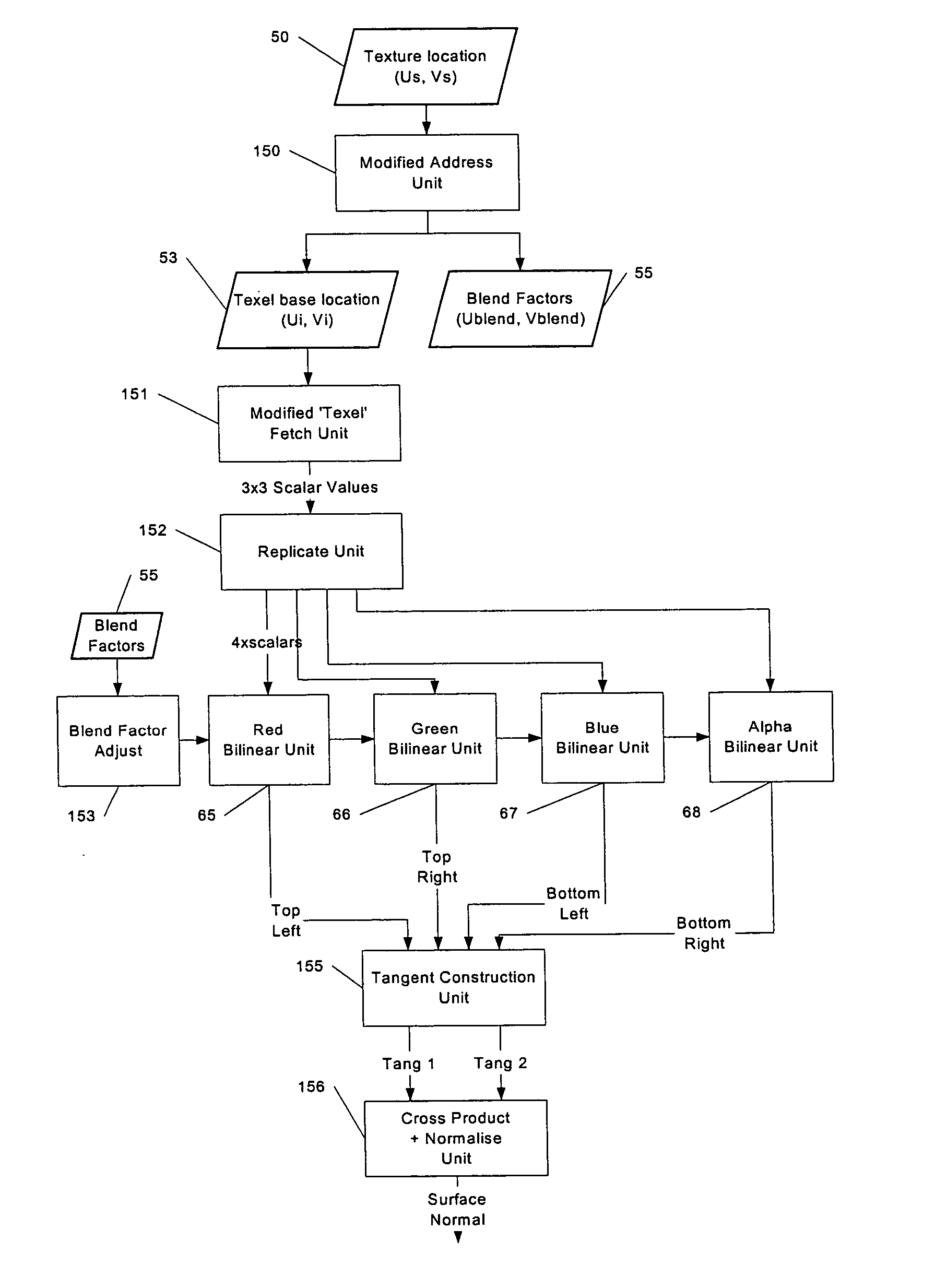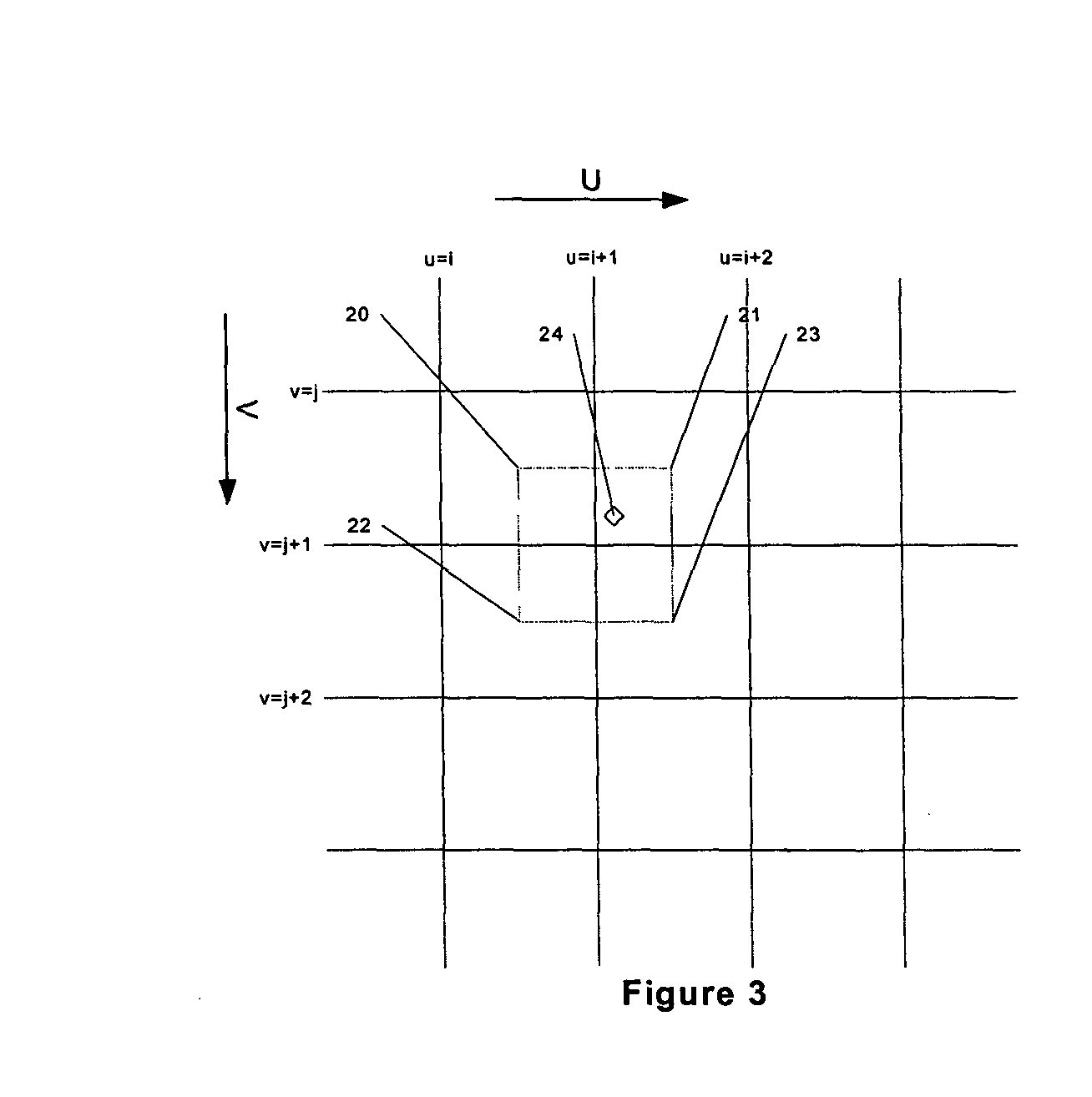Efficient bump mapping using height maps
a technology of height maps and bumps, applied in the field of 3d computer graphics, can solve problems such as inability to change, problems can arise, and inability to accept image quality degradation,
- Summary
- Abstract
- Description
- Claims
- Application Information
AI Technical Summary
Benefits of technology
Problems solved by technology
Method used
Image
Examples
Embodiment Construction
[0050] The preferred embodiment will now be described. Access is provided to height map textures, which store an array of height values, using preferably 4 or 8 bits per texel. Each value will encode a fixed-point number with some number of fraction bits--preferably 1 / 4 of the bits will be assigned to the fractional part.
[0051] The embodiment fits a bi-quadratic B-spline through this set of points, thus giving the virtual height map texture C1 continuity (i.e. continuous first derivatives). In FIG. 5, the points `80`, `81`, and `82` represent three adjacent height values / control points in a row of the height map. The value in the texture is allocated (preferably) to the y dimension while the other coordinate values (i.e., x and z) are implicitly defined by the texel's coordinate position. Alternative embodiments may assign these dimensions in some other permutation. The other control points needed for the surface in the texel region are shown, in plan form, in FIG. 6.
[0052] The mann...
PUM
 Login to View More
Login to View More Abstract
Description
Claims
Application Information
 Login to View More
Login to View More - R&D
- Intellectual Property
- Life Sciences
- Materials
- Tech Scout
- Unparalleled Data Quality
- Higher Quality Content
- 60% Fewer Hallucinations
Browse by: Latest US Patents, China's latest patents, Technical Efficacy Thesaurus, Application Domain, Technology Topic, Popular Technical Reports.
© 2025 PatSnap. All rights reserved.Legal|Privacy policy|Modern Slavery Act Transparency Statement|Sitemap|About US| Contact US: help@patsnap.com



